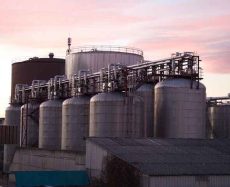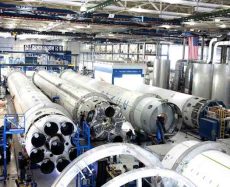
- admin
- August 2, 2021
10 Facts About Above Ground Storage Tanks
For chemical storage, an above ground storage tank, or AST, is frequently the best option. Compliance with the federal Environmental Protection Agency’s Spill, Prevention, Control, and Countermeasure rules is essential, just as it is with underground tanks.
Everything from tank design to construction to installation is governed by these rules. This is to ensure that humans and the environment are both protected from potentially harmful chemical migration into the soil, surface water, or groundwater.
These parameters are obviously essential because groundwater supplies nearly half of the nation’s drinking water.
Here are the 10 distinct characteristics and functions of above ground storage tanks :
- All new above ground storage tanks must be compatible with the substances that will be stored in them.
- The use of secondary confinement has become commonplace. However, greater safety procedures allow ASTs to be installed in previously unsuitable sites, which is a positive by-product. Secondary containment can be achieved by using a double-walled tank or by building a dike system to house the tank and catch any overflow. (The secondary containment system must be able to hold 110 percent of your tank’s contents.)
- The international symbol and color denoting the stored chemical must be clearly labeled on every AST and its valves, among other things. It’s simple to see why, given how dangerous combining chemicals can be.
- Specific fire rating criteria may or may not apply to a tank, depending on its location.
- Because there is no excavation or subsequent re-landscaping, an above ground storage tank is far faster and less expensive to build than an underground tank.
- Similarly, above ground tanks are much easier to transport if the need arises–especially if it’s a smaller tank.
- Government rules mandate specified sorts of record-keeping and AST inspections on a regular basis. Depending on the activity, records must be kept daily, weekly, or monthly.
- Rainwater, leaves, and other debris can cause problems, so regular maintenance and cleaning of your tank and surrounding areas can help. This maintenance will also aid visual checks.
- It’s critical to choose the right tank for your needs. Working with a competent environmental engineer to help you choose the finest equipment, installation options, and long-term monitoring plan is a crucial first step. You’ll be working with a pro who knows everything there is to know about safe chemical storage.
- Leaks and spills are completely avoidable. The ramifications – environmental harm, personal health and safety, fines, and clean-up costs – can be severe. They may be prevented in most cases with adequate tank care and operation.
Conclusion:
GSC Tanks is a well-known manufacturer of engineered industrial storage tanks, vessels, and silos for use in industrial and agricultural operations, as well as municipal water and wastewater treatment facilities. Contact us if you have a suitable location and meet local standards for an above ground storage tank. We will build a strategy to install your new tank in a cost-effective and competent manner.
- above ground storage tanks grounding requirements
Category
- Above Ground Fuel Tanks
- Above Ground Gas Storage Tank
- Above Ground Storage Tanks
- Above Ground Water Storage Tanks
- Agricultural Tanks
- Chemical storage Tanks
- Diesel Fuel Storage Tanks
- Diesel Storage Tanks
- Exernal FloatingRoof Tanks
- Farm Water Tank
- Fiberglass Oil Tanks
- Fiberglass Septic Tanks
- Fiberglass Underground Fuel Storage Tanks
- Field Erected Tanks
- Floating Roof Tank
- Fuel tank
- Industrial Chemical Storage Tanks
- Industrial Gas Tanks
- Industrial Plastic Tanks
- Industrial Storage Tanks
- Industrial Tank heating pads
- industrial tanks
- Natural gas
- Natural gas vs Propane
- oil storage tank
- Oil Storage Tanks
- Peracitic Acid
- Petroleum Tanks
- Residential gasoline storage tanks
- Residential Water Storage Tanks
- Sodium Hydroxide Storage Requirements
- Sodium Hypochlorite Storage Tanks
- Steel Storage Tanks
- storage tank failure prevention
- Storage Tanks
- Sulfuric Acid Tanks
- Uncategorized
- UnderGround Storage Tanks
- Water Storage Tanks

 Tank Size Calculator
Tank Size Calculator






